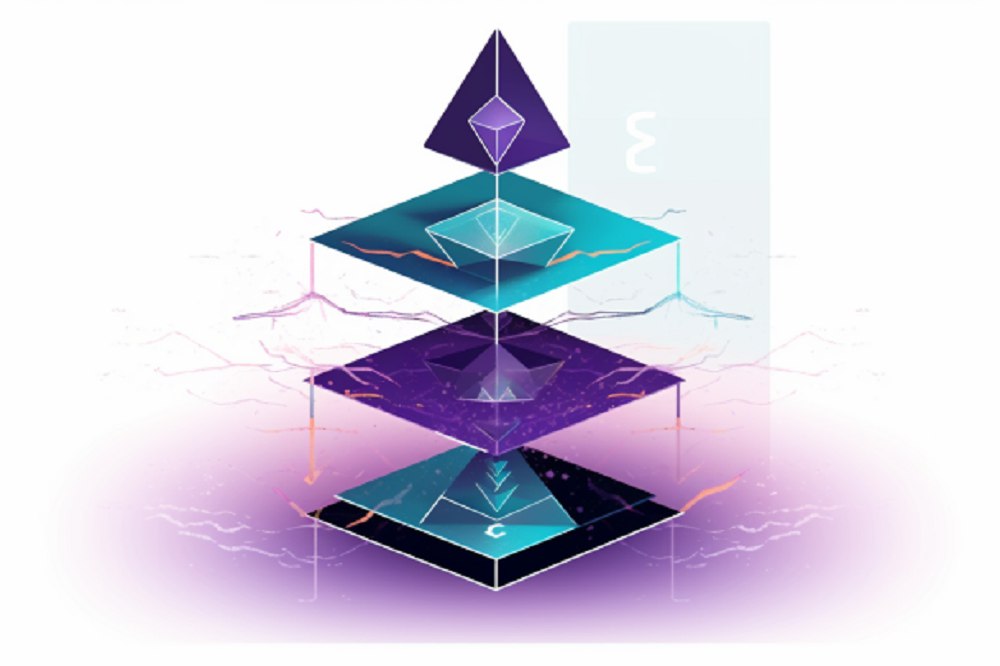The quest to fix Bitcoin and Ethereum’s scaling issues using Layer 2 keeps increasing with each passing day and has become a topic of discussion among developers. With the rapid expansion of the cryptocurrency ecosystems, the volume of on-chain transactions is reaching unprecedented heights.
As a result, observers agree that there is a need for faster and more streamlined Layer 1 blockchain networks. Layer 2 solutions have emerged as a crucial answer in response to the growing demands.
They offer a unique version of scalability that does not compromise the fundamental principles of decentralization and security native to cryptocurrency and blockchain technology. With numerous Layer 2 scaling solutions competing for dominance in the market, many industry players have shown greater interest in Polygon, zkSync, and Arbitrum.
Layer 2 Explained
A Layer 2 (L2) scaling platform is an augmented protocol covering an underlying blockchain infrastructure (Layer 1). As an additional layer, L2 is designed to heighten the swiftness and efficacy of transaction processing within a network by separating transactions from the primary blockchain and handling them autonomously.
By migrating transactions to an independent network, L2 solutions enhance a network’s efficiency by reducing congestion. This transformative approach has led to remarkable improvements in user experience, showing accelerated blockchain performance and reduced gas fees.
As a result, L2 networks have become an essential solution to the congestion issues experienced by the Buterin-founded blockchain. One distinguishing feature of Layer 2 networks is that all are incorporated with an Ethereum Virtual Machine (EVM).
This incorporation enables the seamless deployment of Ethereum-based algorithms, smart contracts and decentralized applications (dApps) to speed up the network. Besides, Layer 2 solutions seamlessly inherit the security and consensus mechanisms from the foundational blockchain.
By adhering to the core tenets of security, trustlessness, and decentralization, L2 networks provide a viable medium for scaling blockchain protocols without sacrificing those protocols’ core principles.
The Need For Layer 2 Scaling Solutions
Layer 1 blockchains, like Ethereum, have encountered several challenges in expanding their transaction throughput to cater to the needs of a rising user community. The influx of users engaging with decentralized finance (DeFi) applications like Uniswap and OpenSea further worsens the strain on the blockchain’s capacity, highlighting the need for scalability enhancements.
The Ethereum network, for example, often experiences structural challenges like network congestion and high transaction fees during increased activities. The Yuga Labs’ Otherside NFT mint incident, marked by gas fees reaching more than $10,000, serves as a vivid reminder of the reoccurring challenges.
Even the Bitcoin ecosystem is not immune to gas fee spike. A recent example is the recent frenzy surrounding Ordinal and BRC-20, which disrupted the world’s largest cryptocurrency network.
Types of L2 Scaling Solutions
Due to blockchain protocols’ scalability challenges, several Layer 2 solutions have been introduced into the market to address these concerns. However, it is worth noting that Bitcoin has its own L2 platform, unlike other networks that depend on the Ethereum protocol for their scalability solutions.
Optimistic Rollups
Optimistic Rollups is an innovative solution that revolutionizes transaction processing by executing transactions off-chain while upholding the underlying blockchain’s security and ultimate validation.
Sidechains
Sidechains, independent blockchains running in unison with the main net, serve as an accessible variant. A two-way pegging mechanism links these chains to the main net, facilitating rapid asset transfers between the primary blockchain and the sidechain.
zkRollups
Also known as zero-knowledge rollups, they harness the potential of zero-knowledge proof systems to boost speedy and secure blockchains coupled with faster processing time.
Bitcoin Lightning Network
The Bitcoin Lightning Network is custom-made for the Bitcoin ecosystem. It is a unique Layer 2 remedy to provide direct off-chain payment channels between users. This solution facilitates swift and cost-effective transactions, bolstering the efficiency of the Bitcoin network.
Despite the available L2 scaling solutions, users have not found the perfect fit for their operations.
